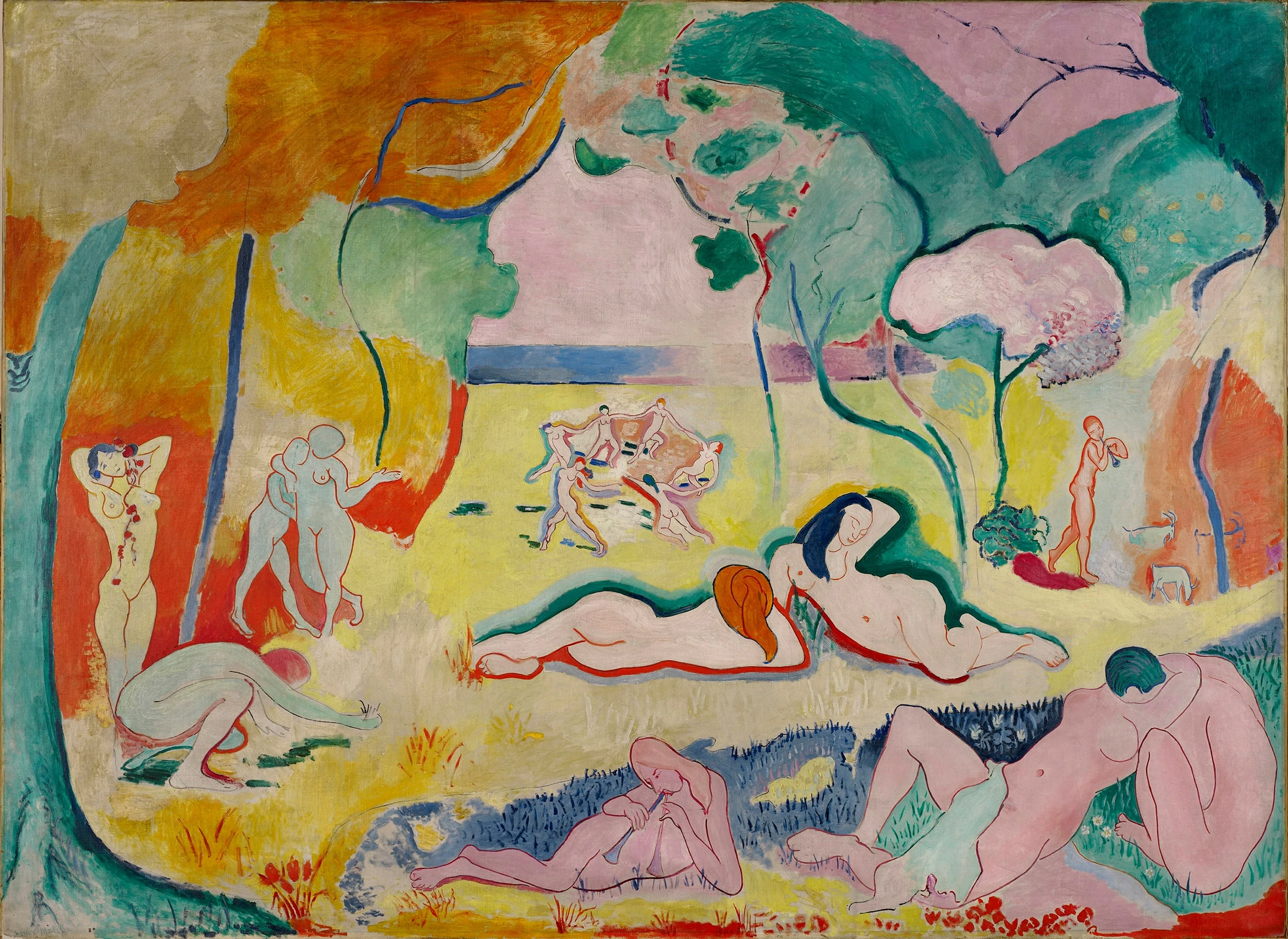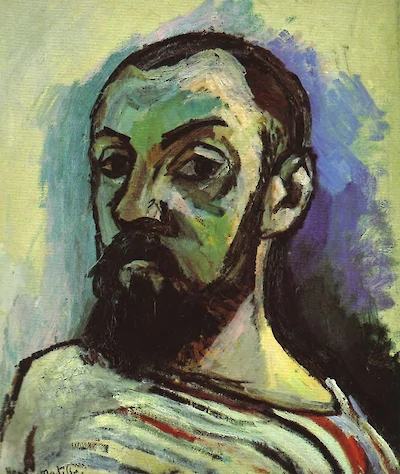

Henri Matisse
100% artist
1869 – 1954My education consisted of making me aware of the different means of expression in color and drawing. My classical education naturally led me to study the Masters, and to assimilate them as much as possible while considering such things as column, the arabesque, value contrasts and harmony, and to relate my reflections to my work from nature; until the day when I realized that for me it was necessary to forget the technique of the Masters, or rather understand it in a completely personal manner. Isn’t this the rule with every artist of classical training? Next came the knowledge and influence of the arts of the Orient.
My line drawing is the purest and most direct translation of my emotion. The simplification of the medium allows that. However, these drawings are more complete than they may appear to some people who confuse them with a kind of sketch. They generate light; seen on a dull day or in indirect light they contain, in addition to the flavor and sensitivity of the line, light and value differences that quite clearly correspond to color. These colors are also evident to many in full light. They derive from the fact that the drawings are always preceded by studies made in a less rigorous medium than pure line, such as charcoal or stump drawing, which allows me to consider simultaneously the character of the model, her human expression, the quality of the surrounding light, the atmosphere and all that can only be expressed by drawing. And it is only when I feel that I am drained by the work, which may go on for several sessions, that my mind is cleared and I have the confidence to give free rein to my pen. Then I distinctly feel that my emotion is expressed by means of plastic writing. Once my emotive line has modeled the light of my white paper without destroying its precious whiteness, I can neither add nor take anything away. The page is writer, no correction is possible. If it is not adequate, there is no alternative that to begin again, as if it were an acrobatic feat. It contains, amalgamated according to my possibilities of synthesis, the different points of view that I could more or less assimilate through my preliminary study.
The jewels or the arabesques never overwhelm my drawings from the model, because these jewels and arabesques form part of my orchestration. Well placed, they suggest the form or the value accents necessary to the composition of the drawing. Here I recall a doctor who said to me: “When one looks as your drawings, one is astonished to see how well you know anatomy.” For him, my drawings, in which movement was expressed by a logical rhythm of lines, suggested the play of muscles in action.
“When one looks as your drawings, one is astonished to see how well you know anatomy.”
It is in order to liberate grace and character that I study so intently before making a pen drawing. I never impose violence on myself; to the contrary, I am like the dancer or tightrope walker who begins his day with several hours of numerous limbering exercises so that every part of his body obeys him, when in front of his public he wants to give expression to his emotions by a succession of slow or fast dance movements, or by an elegant pirouette. (As regards perspective: my final line drawings always have their own luminous space, and the objects of which they are composed are on their different planes; thus, in perspective, but in a perspective of feeling, in suggested perspective.)
I have always considered drawing not as an exercise of particular dexterity, but above all as a means of expressing intimate feelings and descriptions of states of being, but as a means of deliberately simplified so as to give simplicity and spontaneity to the expression, which should speak without clumsiness, directly to the mind of the spectator.
My models, human figures, are never just “extras” in an interior. They are the principal theme of my work. I depend absolutely on my model, whom I observe at liberty, and then I decide on the pose which best suits her nature. When I take a new model, it is from the unselfconscious attitudes she takes when she rests that I intuit the pose that will best suit her, and then I become the slave of that pose. I often keep those girls several years, until my interest is exhausted. My plastic signs probably express their souls (a word I dislike), which interests me subconsciously, or what else is there? Their forms are not always perfect, but they are always expressive. The emotional interest they inspire in me is not particularly apparent the representation of their bodies, but often rather by the lines or the special values distributed over the whole canvas or paper and which form its orchestration, its architecture. But not everyone perceives this. It is perhaps sublimated voluptuousness, something that may not yet be perceptible to everyone.
It is said of me: “This charmer who takes pleasure in charming monsters.” I never through of my creations as charmed or charming monsters. I replied to someone who said I didn’t see women as I represented them: “If I met such women in the street, I should run away in terror.” Above all, I do not create a woman, I make a picture.
In spite of the absence of cross-hatching, or chadors or half-tones, I do not renounce the play of values, or modulations. I modulate with variations in the thickness of my line, and above all with the areas it delimits on the white paper. I modify the different parts of the white paper without touching them, but by how they relate to neighboring areas. This can be very well seen in the drawings of Rembrandt, Turner, and of colorists in general.
To sum up, I work without theory. I am conscious only of the forces I use, and I am driven by an idea that I really only grasp as it grows with the picture. As Chardin used to say, “I add (or I take away, because I scrape out a lot) until it looks right.”
Making a picture would seems as logical as building a house, if only one proceeded on sound principals. One should not bother about the human side. Either one has it or one hasn’t. If one has, it colors the work in spite of everything.